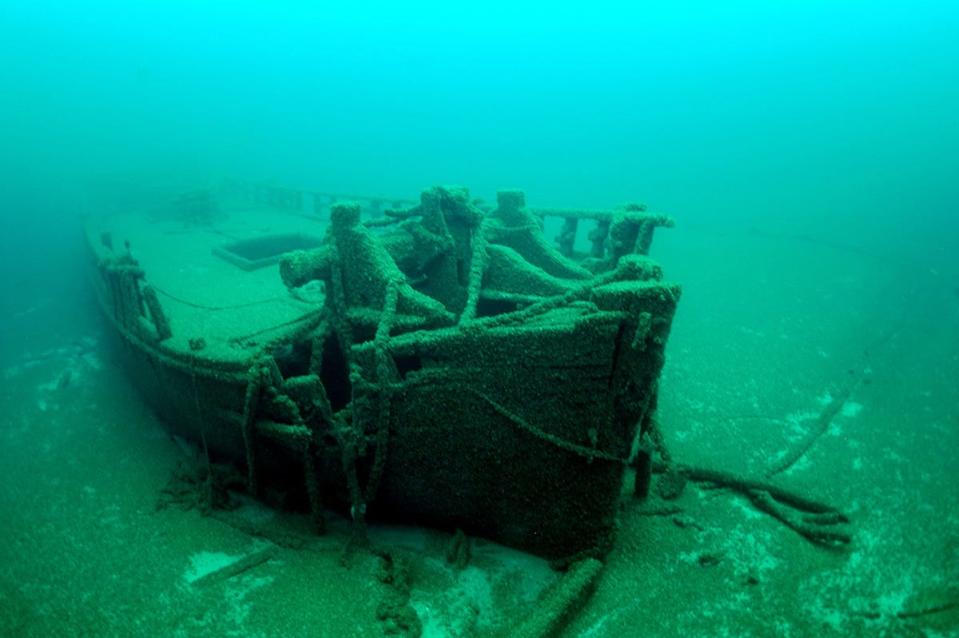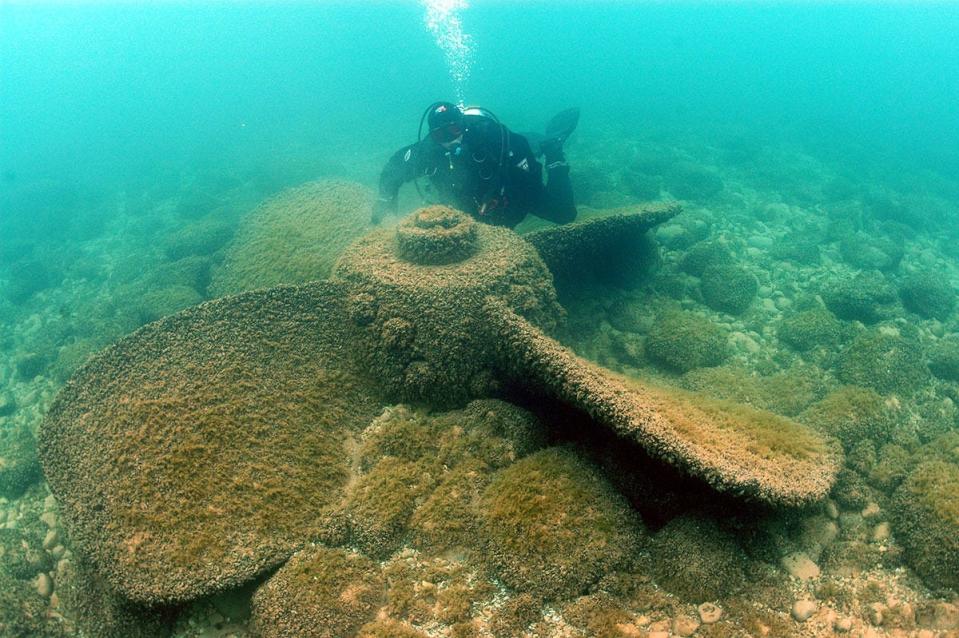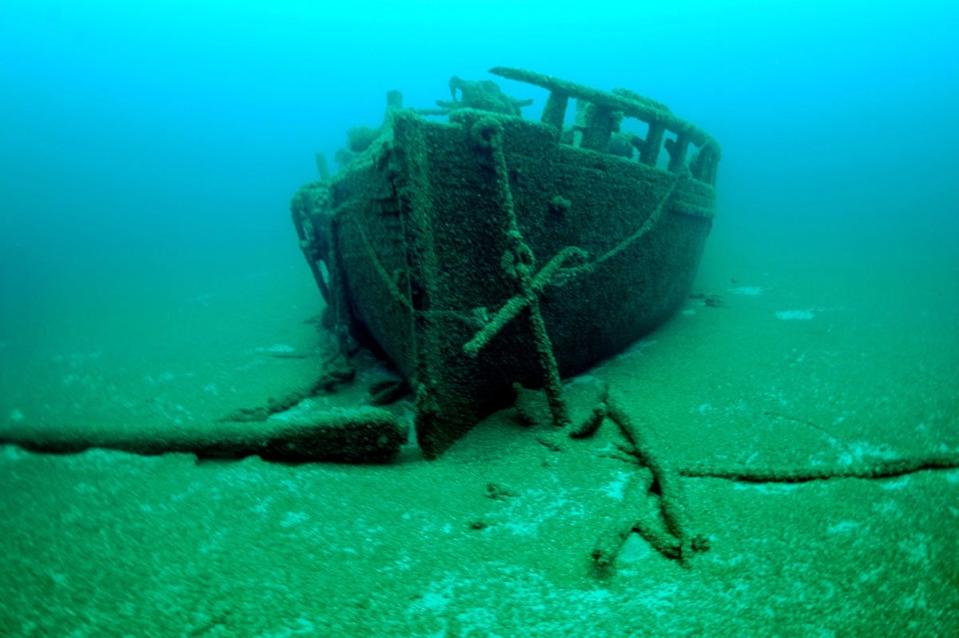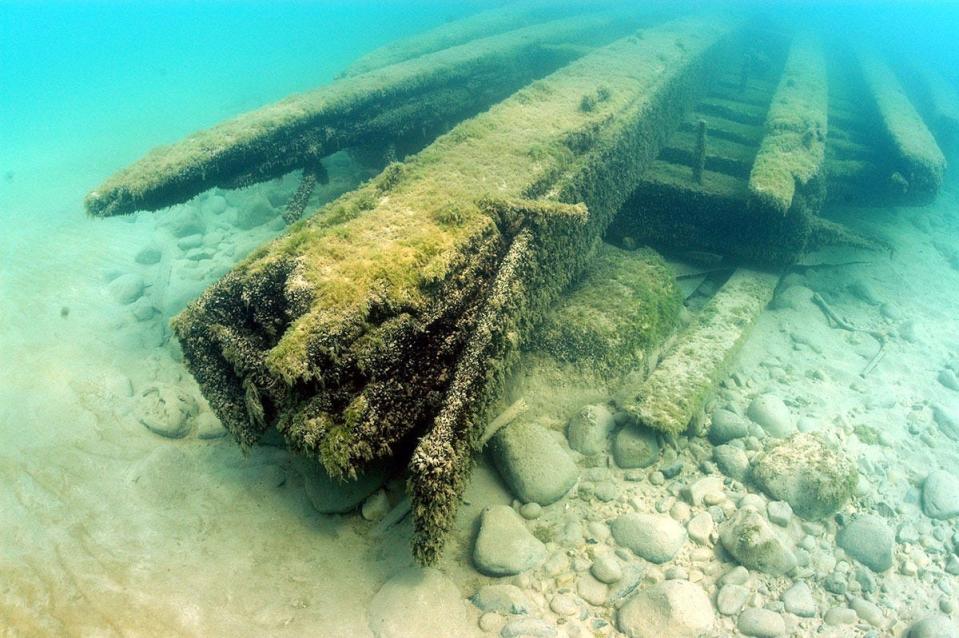How many shipwrecks are in Lake Michigan, and what happens to them?
Not all of the thousands of ships that sailed Lake Michigan were able to survive the testing waters. Now, preserved by the lake's fresh water, these shipwrecks can tell us stories of the past.
But how many shipwrecks are in Lake Michigan?
That’s what one reader asked What the Wisconsin? — where reporters take on questions about our state, our communities and the people in them.
More:Wisconsin Shipwreck Coast on Lake Michigan designated as 15th national marine sanctuary
It's believed there are about 600 shipwrecks in Lake Michigan

Altogether, 750 ships are known to have sailed from Wisconsin and never made it to their destination, according to Tamara Thomsen from the Maritime Preservation Program at the Wisconsin Historical Society. Approximately 600 are believed to have sunk in Lake Michigan.
The location of only 210 of those ships is known, she said. A handful of ships are discovered each year.
“There’s still a lot of work to be done for finding ships, archeological research, and recording them,” Thomsen said.
And the total number of ships believed to be in Lake Michigan is an approximation. Ships are added or taken away from the number as researchers learn more.
The Wisconsin Shipwreck Coast National Marine Sanctuary — 960 square miles that stretch from Port Washington to Two Rivers — contains 36 known shipwrecks, said superintendent Russ Green.
Within the sanctuary, 27 shipwrecks are on the National Registry of Historic Places.
How are shipwrecks found?

The Wisconsin Historical Society does not find shipwrecks. There are third parties that search for the shipwrecks using their own money and boats.
“There are guys that do shipwreck hunting as a hobby. They research, plot the last known location and then search those likely locations,” Thomsen said.
Their search for shipwrecks begins in the journals of sailors, logs of lighthouse keepers, maps, newspaper articles and other records.
When trying to find a shipwreck, the simplest technique is a visual search, which works in shallow water. Visual searches can be performed from an airplane, by looking over the side of the boat, or by divers swimming with scuba equipment.
If the area is large, in deep water, or in water with low visibility, electronic equipment is used to locate the shipwrecks. An example of this equipment is a magnetometer, which is an underwater metal detector that picks up signals from the metal parts of a shipwreck. Once it receives a signal from a metal object, it records the "targets" on a computer.
Divers then investigate the targets to see if they're actually part of a shipwreck.
What happens once a shipwreck is found?
Once a shipwreck is located, archeologists go underwater and map the entire shipwreck using waterproof paper and a pencil.
Archeologists divide the shipwrecks into sections and each archeologist records the artifacts and shipwrecks in his or her area.
They draw detailed maps of the shipwrecks because the limited visibility prevents them from taking a photograph of the entire shipwreck.
Archeologists are able to tell and preserve a story that would have otherwise remained a mystery.
As WisconsinShipwrecks.org — which is maintained by the historical society — puts it:
"You might think of a shipwrecks as a history book. When a shipwrecks is carefully studied and documented, it is like writing a book. If the shipwreck is not examined properly or the artifacts are removed without recording them, it is like tearing pages from the book — pages that will be lost forever."
The shipwrecks within the sanctuaries date back to 1840, Green said.
"They really are a snapshot of our nation's history, westward expansion and are a window into the past," Green said.
Why are shipwrecks left underwater?
Unlike the ocean, Lake Michigan has cold, fresh water, which plays a significant role in preserving the shipwrecks.
"The deeper you go, the less dynamic that water is. They will survive in deep water," Green said.
The shipwrecks in deep water look like a Disney set, Green said.
These are some of the shipwrecks found in Lake Michigan
Home

One of the oldest shipwrecks discovered in Wisconsin, Home was likely used in some capacity with the Underground Railroad. It was never caught with fugitive slaves aboard, according to WisconsinShipwrecks.org.
On its final voyage, Home collided with the schooner William Fiske southeast of Manitowoc.
No lives were lost. Today, Home is upright in 170 feet of water and the hull is largely intact. There is collision damage at the starboard bow and the stern cabin is missing. The foremast is on display at the Rogers Street Fishing Village in Two Rivers.
Appomattox

The largest wooden bulk steamer ever constructed on the Great Lakes, possibly in the world, Appomattox was built in 1896 by Captain James Davidson and was 319 feet long.
On Nov. 2, 1905, Appomattox was towing the Santiago. The vessels were too close to Lake Michigan's west shore and went aground near North Point. Appomattox suffered bottom damage, and the rescue crews were unable to float her. Worsening weather further damaged the Appomattox. For the next 13 days, wrecking crews and the U.S. Lifesaving Service tried to salvage the vessel but were unable to. Appomattox was abandoned Nov. 15, 1905.
Two years later, the Reid Wrecking company removed Appomattox's machinery but left the broken, well-preserved hull.
Today, the site of Appomattox lies in 15 to 20 feet of water approximately 150 yards off Atwater Beach in Shorewood.
Toledo
Toledo was a 179-foot-long, double-decked passenger and freight steamer. The fleet catered to immigrants on their way to settle in Wisconsin and Minnesota.
On its final voyage, Toledo was set for Milwaukee when a sudden summer storm began, and the storm increased in violence rapidly. The scene was described as awful. "For two miles, or more, the lake shore is lined with fragments of the wreck, piled up, in many places, several feet high ... The heavier portions of the hull have come ashore in large pieces, but the upper works are broken up into innumerable fragments," according to Wisconsin Shipwrecks. The loss of lives varies from 30 to 80 people.
Today, the wreckage of the vessel is scattered starting about 2 yards offshore near Ozaukee County.
Sea Bird
On its final voyage, Sea Bird was bound from Ludington to Racine when she foundered off of Milwaukee in a squall. The wreck was first sighted in Milwaukee. Searchers later spotted the ship 20 miles northeast of Milwaukee, but then lost her again.
Sea Bird was never seen again, and it is believed that all six crew members and two female passengers died.
What's What the Wisconsin?
Is there something about Milwaukee or Wisconsin that's been puzzling you? We've got experts who know how to find answers to even the smallest (and sometimes the most interesting) questions. When we can, we'll answer with stories. Submit your question at bit.ly/whatthewisconsin.
This article originally appeared on Milwaukee Journal Sentinel: How many shipwrecks are in Lake Michigan, and why are they left there?

